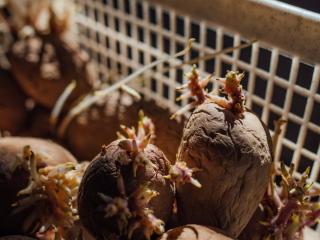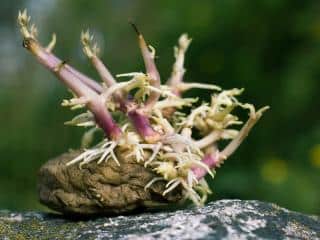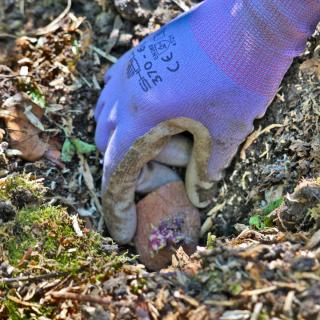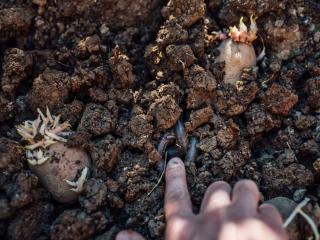

Germinating potato tubers before planting them helps increase growth of your young plants. It brings the harvest a few days or weeks earlier, and increases harvest size and quality.
This technique doesn’t apply to “pre-germinated” potatoes purchased in horticulture stores. Pre-germinated potatoes are already ready to plant.
Potato germination applies to:
This works for all potato varieties, from the black vitelotte to sweet potato!
This is the most successful way to help your potatoes germinate before planting:
 Use a shallow crate or an egg carton/egg tray.
Use a shallow crate or an egg carton/egg tray. It’s normal for the potato to wither and wrinkle.
It’s normal for the potato to wither and wrinkle.
This is because nutrients are converted into sprouts and roots.
When the sprouts are a few inches long (5-10 cm), the germinated potato is ready for planting.
Some of the sprouts may die off or their tips might turn black. This is usually a sign that you shouldn’t wait too long before planting.
 It is perfectly possible to germinate spuds from last year’s potato harvest.
It is perfectly possible to germinate spuds from last year’s potato harvest.
A few weeks after your potatoes have begun to germinate, outside soil should be averaging temperatures of around 55°F (12°C). It’s time to transfer them to the ground and grow your potatoes for a beautiful harvest!
Potatoes that are germinating are at their most vulnerable stage. Their skin is pierced by growing buds, sometimes creating wounds that pests and fungus can enter through.
Also, spring temperatures are warming the soil, waking hiber nating insects from their slumber. Regular earthworms won’t eat your potatoes, so nothing to worry about there.
nating insects from their slumber. Regular earthworms won’t eat your potatoes, so nothing to worry about there.
Here are the main culprits eating potatoes underground:
Note: the colorado potato beetle is never a problem at this stage: all it damages is above ground.
Diseases that damage young potato tubers inclure blackleg and scab.
A good way to know the right timing for planting is when buds start turning a bit purple…
Lacking a few to finish off the row? Slice a larger one in half with a bud on each side. Plant each half separately.